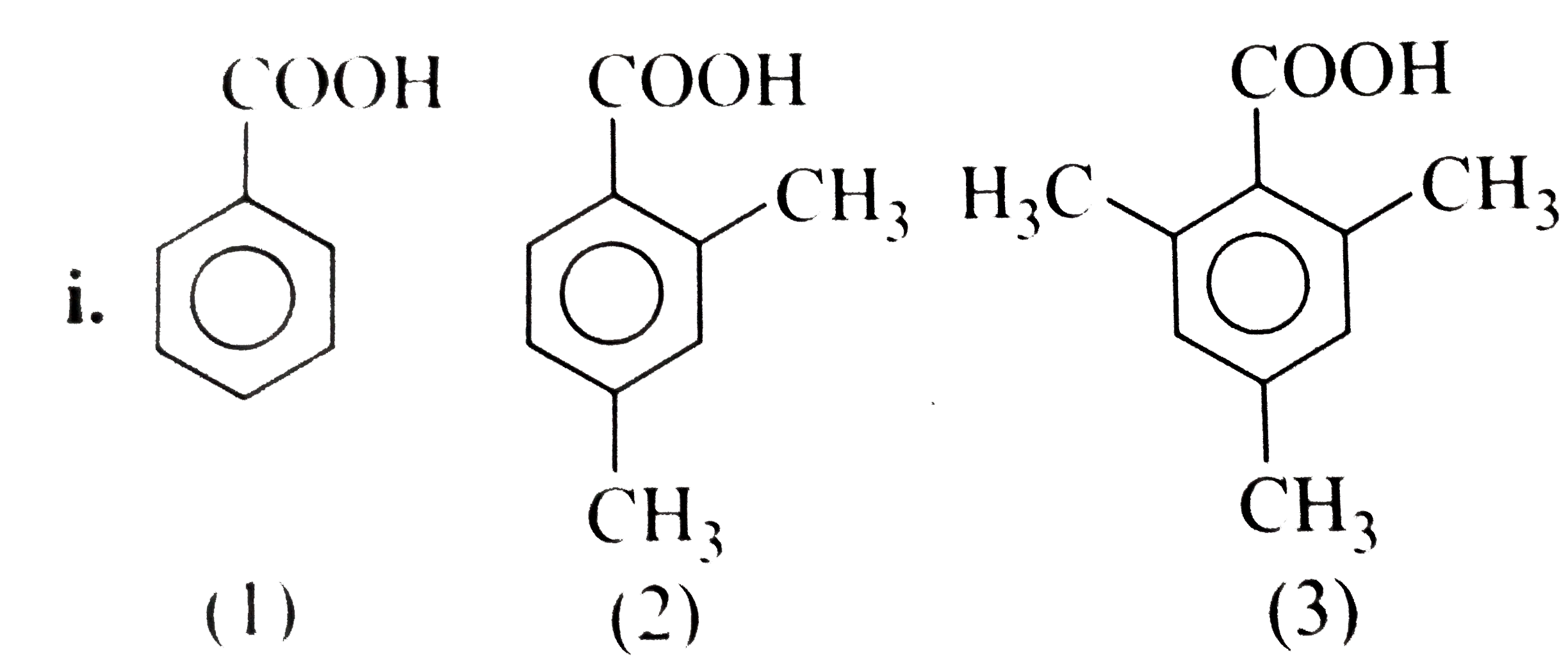Form among the following choose the solutions with positive and negative deviations
(1) ROH+ROR
(2) RSH+ROR
(3) CHCl3+CH3COCH3
(4) HF+ROH
To determine which solutions exhibit positive and negative deviations from Raoult's law, we need to analyze the interactions between the components in each solution.
1. Understanding Positive and Negative Deviations:
- Positive Deviation: Occurs when the vapor pressure of the solution is higher than predicted by Raoult's law. This happens when the solute-solute and solvent-solvent interactions are stronger than the solute-solvent interactions.
- Negative Deviation: Occurs when the vapor pressure of the solution is lower than predicted. This happens when the solute-solvent interactions are stronger than the solute-solute and solvent-solvent interactions.
2. Analyzing Each Option:
- (1) ROH + ROR:
- ROH (an alcohol) has strong hydrogen bonding. ROR (an ether) has weaker interactions. The interactions between ROH and ROR are not strong enough to overcome the strong interactions within ROH. Therefore, this solution shows positive deviation.
- (2) RSH + ROR:
- RSH (a thiol) and ROR (an ether) also have weaker interactions compared to the individual interactions. Thus, this combination will also show positive deviation due to the weaker solute-solvent interactions.
- (3) CHCl3 + CH3COCH3:
- CHCl3 (chloroform) and CH3COCH3 (acetone) can form dipole-dipole interactions. The interactions between these two components are stronger than their individual interactions, leading to negative deviation.
- (4) HF + ROH:
- HF (hydrofluoric acid) has strong hydrogen bonding, and ROH (an alcohol) also exhibits strong hydrogen bonding. The interactions between HF and ROH will be very strong, leading to negative deviation.
3. Conclusion:
- Solutions with positive deviations: (1) ROH + ROR and (2) RSH + ROR.
- Solutions with negative deviations: (3) CHCl3 + CH3COCH3 and (4) HF + ROH.
Final Answer:
- Positive Deviations: (1) ROH + ROR, (2) RSH + ROR
- Negative Deviations: (3) CHCl3 + CH3COCH3, (4) HF + ROH
- Positive Deviation: Occurs when the vapor pressure of the solution is higher than predicted by Raoult's law. This happens when the solute-solute and solvent-solvent interactions are stronger than the solute-solvent interactions.
- Negative Deviation: Occurs when the vapor pressure of the solution is lower than predicted. This happens when the solute-solvent interactions are stronger than the solute-solute and solvent-solvent interactions.
- (1) ROH + ROR:
- ROH (an alcohol) has strong hydrogen bonding. ROR (an ether) has weaker interactions. The interactions between ROH and ROR are not strong enough to overcome the strong interactions within ROH. Therefore, this solution shows positive deviation.
- (2) RSH + ROR:
- RSH (a thiol) and ROR (an ether) also have weaker interactions compared to the individual interactions. Thus, this combination will also show positive deviation due to the weaker solute-solvent interactions.
- (3) CHCl3 + CH3COCH3:
- CHCl3 (chloroform) and CH3COCH3 (acetone) can form dipole-dipole interactions. The interactions between these two components are stronger than their individual interactions, leading to negative deviation.
- (4) HF + ROH:
- HF (hydrofluoric acid) has strong hydrogen bonding, and ROH (an alcohol) also exhibits strong hydrogen bonding. The interactions between HF and ROH will be very strong, leading to negative deviation.
- Solutions with positive deviations: (1) ROH + ROR and (2) RSH + ROR.
- Solutions with negative deviations: (3) CHCl3 + CH3COCH3 and (4) HF + ROH.
- Positive Deviations: (1) ROH + ROR, (2) RSH + ROR
- Negative Deviations: (3) CHCl3 + CH3COCH3, (4) HF + ROH
Topper's Solved these Questions
- BOOK - AAKASH INSTITUTECHAPTER - SOLUTIONSEXERCISE - ASSIGMENT (SECTION-A)50videos
SOLUTIONS
- BOOK - AAKASH INSTITUTECHAPTER - SOLUTIONSEXERCISE - ASSIGMENT (SECTION-B)21videos
SOLUTIONS
- BOOK - AAKASH INSTITUTECHAPTER - SOLUTIONSEXERCISE - ASSIGMENT (SECTION-J) AAKASH CHALLENGERS QUESTIONS10videos
SOLUTIONS
- BOOK - AAKASH INSTITUTECHAPTER - REDOX REACTIONSEXERCISE - ASSIGNMENT SECTION - D10videos
REDOX REACTIONS
- BOOK - AAKASH INSTITUTECHAPTER - SOME BASIC CONCEPT OF CHEMISTRYEXERCISE - ASSIGNMENT( SECTION - D) Assertion-Reason Type Questions15videos
SOME BASIC CONCEPT OF CHEMISTRY
Similar Questions
Arrange the following in order of increasing reactivity towards nucleophilic addition reactions
C6H5COCH3,CH3CHO,CH3COCH3.View Solutiona. Acid halides, anhydrides, esters and amides, all of them contain (C=O) group but none of them gives test for (C=O) group, i.e., they do not form oximes, hydrazones, and DNP derivatives, etc. Why?
b. Arrange the following in the decreasing order of nucleophilic addition.
i. (1)−CHO
(2)−COCH3
(3)−COOH
(4)−COCI
(5)−CONH2
(6)−COOCH3
(7)−COOΘ
ii. (1)CH3CHO
(2)CH3COCH3
(3)HCHO
(4)CH2H5CH2COCH3
iii. (1)CH3COCH3
(2)C6H5COCH3
(3)C6H5COC6H5
(4)C6H5CH2COCH3
iv. (1)C6H5CHO
(2)ρ−CH3.C6H4.CHO
(3)ρ−OH.C6H4.CHO
(4)ρ−NO2.C6H4.CHO
(5)ρ−CI.C6H4.CHO
v. (1)HCHO
(2)CH3CHO
(3)CH3COCH3
(4)CI3CCHO
c. Arrange the following in the increasing order of ease of hydrolysis.
(1)CCH3COOC2H5
(2)CH3COCI
(3)(CH3CO)2O
(4)CH3CONH2
d. Arrange the following in the increasing order of ease of acid-catalysed esterification of:
i.
ii. (1)CH3CH2COOH
(2)(CH3)2CHCOOH
(3)(CH3)3CCOOH
iii. (1)CH3CH2CH2OH
(2)CH3CHOHC2H5
(3)(CH3)2C(OH)C2H5
e. Arrange the following esters in decresing order of ease of alkaline hydrolysis.
i. (1)HCOOCH3
(2)CH3COOCH3
(3)(CH3)3CCOOCH3
(4)(CH3)2CHCOOCH3
ii. (1)CH3COOCH3
(2)CH3COOC(CH3)3
(3)CH3COOCH(CH3)2
(4)CH3COOCH2CH3
iii. (1)C6H5COOCH3
(2)ρ−CH3O−C6H4−CCOOCH3
(3)ρ−NO2−C6H4−COOCH3
(4)ρ−Cl−C6H4−COOCH3View Solution
Knowledge Check
- Question 1 - Select One
IUPAC name of CH3CH2COCH3 is _________.
A2-butanalB1-butanalC1-butanoneD2-butanone - Question 2 - Select One
Correct order of reactivity of CH3CHO,C2H3COCH3andCH3COCH3 is
ACH3CHO>CH3COCH3>CH3COC2H5BC2H5COCH3>CH3COCH3>CH3CHOCCH3COCH3>CH3CHO>C2H5COCH3DCH3COCH3>C2H5COCH3>CH3CHO - Question 3 - Select One
IUPAC name of CH3CH2CH2COCH3 is
A2-pentanoneBPentan-2-oneCpentanone-2Dall the above
Arrange the following in the order of their incresing reactivity towards HCN:
CH3CHO,CH3COCH3,HCHO,C2H5COCH3View SolutionArrange the following in order of increasing reactivity towards nucleophilic addition reactions
C6H5COCH3,CH3CHO,CH3COCH3.View SolutionAmong the following compound the reactivity order is
(1) H−CHO (2)CH3−CHO
(3) CH3−O∣∣C−CH3 (4)C2H5−COCH3View SolutionThe correct order of solubility of following compound is
(1) H−CHO (2)CH3−CHO
(3) CH3−CH2−CHO (4)CH3−COCH3View SolutionArrange the following in the increasing order of expected enol content.
i. CH3COCH2CHO
ii. CH3COCH3
iii. CH3CHO
iv. CH3COCH2COCH3View Solution

